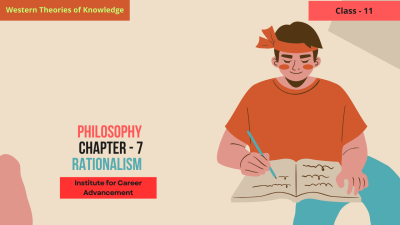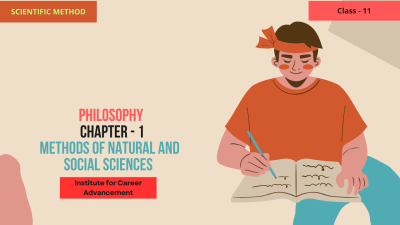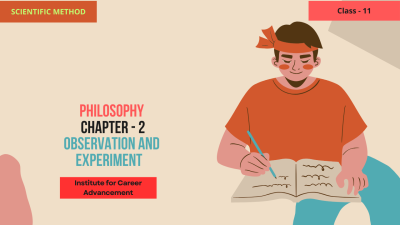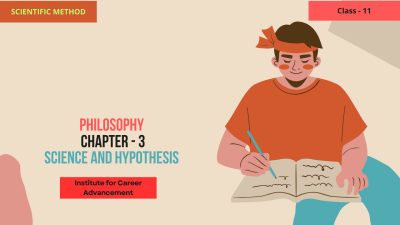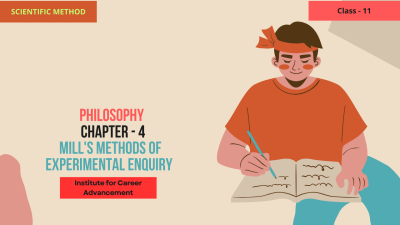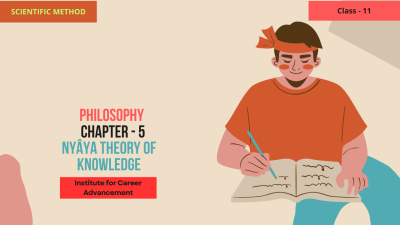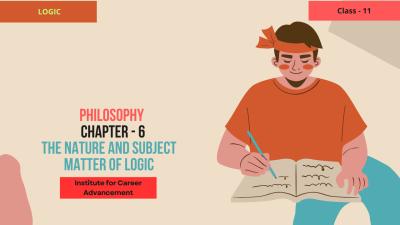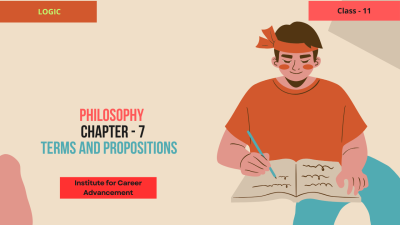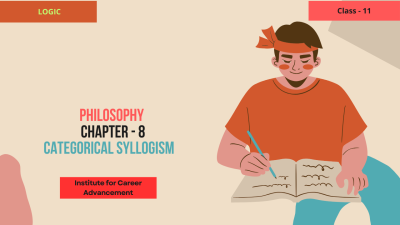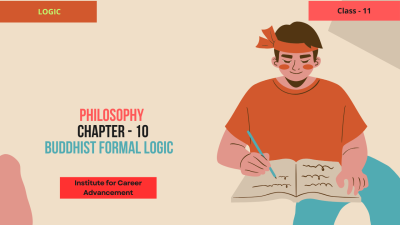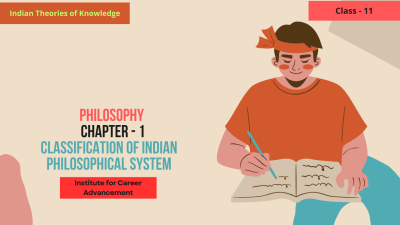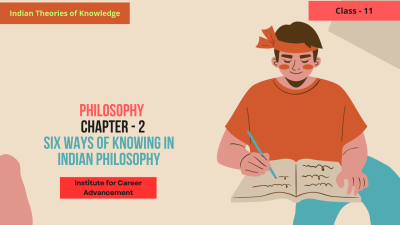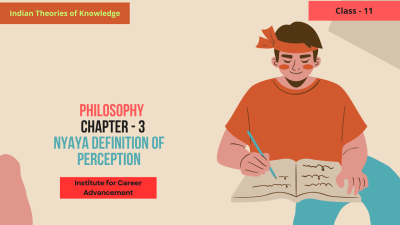Course description
Rationalism is an important philosophical approach that emphasizes reason as the primary source of knowledge, rather than sensory experience or religious authority. In the context of a Class 11 curriculum, rationalism is typically covered in the subject of Philosophy or Political Science, depending on the educational board.
Here’s an overview of the typical themes related to rationalism in a Class 11 course:
1. Introduction to Rationalism
Definition: Rationalism is the epistemological view that reason is the chief source of knowledge. According to rationalists, the mind has the capacity to understand the world through logical and intellectual processes, independent of sensory experiences.
Contrast with Empiricism: Rationalism is contrasted with empiricism, which holds that knowledge comes from sensory experience.
2. Key Philosophers of Rationalism
René Descartes (1596–1650): Often called the father of modern philosophy, Descartes famously stated "Cogito, ergo sum" ("I think, therefore I am"). He believed that knowledge could only be obtained through reason and doubted the reliability of the senses.
Baruch Spinoza (1632–1677): A Dutch philosopher who emphasized that reason could help people understand God and the universe. He believed in the unity of substance and proposed that the universe and everything in it are interconnected.
Gottfried Wilhelm Leibniz (1646–1716): Leibniz argued for the existence of innate ideas and believed in a pre-established harmony between the mind and the world. He was instrumental in developing the concept of rationality as a way of understanding the metaphysical nature of reality.
3. Core Concepts of Rationalism
Innate Ideas: Rationalists propose that some ideas or concepts are inherent in the human mind and are not derived from sensory experience. These ideas are "built-in" and form the foundation of knowledge.
Deductive Reasoning: Rationalism heavily relies on the process of deductive reasoning, where conclusions are drawn logically from general premises. This approach contrasts with inductive reasoning, where knowledge is built from observations and experiences.
Mathematics and Logic: Rationalists often cite mathematics as an example of knowledge that is universally true and discovered through reason rather than experience.
4. Rationalism vs Empiricism
Empiricism (e.g., John Locke, George Berkeley, David Hume): Empiricists argue that knowledge comes primarily from sensory experience, and the mind is a "blank slate" at birth. This is opposed to rationalist views that knowledge can be gained through reason alone.
The Debate: The rationalist-empiricist debate forms a foundational theme in epistemology and addresses questions like, "How do we know what we know?" and "What is the source of all knowledge?"
5. Applications of Rationalism
Science and Mathematics: Rationalist methods have been foundational in the development of scientific theories. Deductive reasoning and abstract mathematical principles rely on the rationalist view that certain truths can be understood through reason.
Ethics and Morality: Some rationalist philosophers believe that moral principles are derived through reason rather than from external authorities, like religion or tradition. Rational ethics emphasizes rational deliberation in determining the right course of action.
6. Criticism of Rationalism
Limits of Reason: Critics argue that relying solely on reason excludes important aspects of human experience, such as emotion and perception.
Over-reliance on Innate Ideas: Some philosophers question the validity of innate ideas and argue that knowledge is more complex and cannot be solely attributed to reason.
Empirical Counterarguments: Empiricists assert that the senses provide crucial data about the world, which reason alone cannot access or explain.
This overview outlines the main themes related to rationalism, which students typically encounter in a Class 11 Philosophy course. The focus is on understanding the foundational role of reason in the acquisition of knowledge, as well as engaging with the historical development and philosophical debates surrounding this perspective.
যুক্তিবাদ একটি গুরুত্বপূর্ণ দার্শনিক দৃষ্টিভঙ্গি যা সংবেদনশীল অভিজ্ঞতা বা ধর্মীয় কর্তৃত্বের পরিবর্তে জ্ঞানের প্রাথমিক উৎস হিসাবে যুক্তির উপর জোর দেয়। একাদশ শ্রেণির পাঠ্যক্রমের প্রেক্ষাপটে, যুক্তিবাদকে সাধারণত শিক্ষা বোর্ডের উপর নির্ভর করে দর্শন বা রাষ্ট্রবিজ্ঞানের বিষয়ে অন্তর্ভুক্ত করা হয়। এখানে একাদশ শ্রেণির কোর্সে যুক্তিবাদ সম্পর্কিত সাধারণ থিমগুলির একটি সংক্ষিপ্ত বিবরণ দেওয়া হলঃ 1টি। যুক্তিবাদের পরিচয় সংজ্ঞাঃ যুক্তিবাদ হল জ্ঞানতাত্ত্বিক দৃষ্টিভঙ্গি যে যুক্তি হল জ্ঞানের প্রধান উৎস। যুক্তিবাদীদের মতে, ইন্দ্রিয়গত অভিজ্ঞতা থেকে স্বাধীনভাবে যুক্তিসঙ্গত ও বুদ্ধিবৃত্তিক প্রক্রিয়ার মাধ্যমে বিশ্বকে বোঝার ক্ষমতা মনের রয়েছে। অভিজ্ঞতার সাথে বৈপরীত্যঃ যুক্তিবাদ অভিজ্ঞতার সাথে বৈপরীত্যপূর্ণ, যা বলে যে জ্ঞান সংবেদনশীল অভিজ্ঞতা থেকে আসে। 2. যুক্তিবাদের মূল দার্শনিকরা রেনে ডেসকার্টেস (1596-1650) প্রায়শই আধুনিক দর্শনের জনক হিসাবে পরিচিত, ডেসকার্টেস বিখ্যাতভাবে বলেছিলেন "কোগিটো, এরগো সাম" ("আমি মনে করি, তাই আমি আছি")। তিনি বিশ্বাস করতেন যে জ্ঞান কেবল যুক্তির মাধ্যমেই পাওয়া যেতে পারে এবং ইন্দ্রিয়ের নির্ভরযোগ্যতা নিয়ে তিনি সন্দেহ করতেন। বারুক স্পিনোজা (1632-1677) একজন ডাচ দার্শনিক যিনি জোর দিয়েছিলেন যে যুক্তি মানুষকে ঈশ্বর এবং মহাবিশ্বকে বুঝতে সাহায্য করতে পারে। তিনি পদার্থের একতায় বিশ্বাস করতেন এবং প্রস্তাব দিয়েছিলেন যে মহাবিশ্ব এবং এর মধ্যে থাকা সমস্ত কিছু আন্তঃসংযুক্ত। গটফ্রিড উইলহেম লিবনিজ (1646-1716) লিবনিজ সহজাত ধারণার অস্তিত্বের পক্ষে যুক্তি দিয়েছিলেন এবং মন ও বিশ্বের মধ্যে প্রাক-প্রতিষ্ঠিত সম্প্রীতিতে বিশ্বাস করতেন। বাস্তবতার আধ্যাত্মিক প্রকৃতি বোঝার উপায় হিসাবে যৌক্তিকতার ধারণাটি বিকাশে তিনি গুরুত্বপূর্ণ ভূমিকা পালন করেছিলেন। 3. যুক্তিবাদের মূল ধারণাগুলি সহজাত ধারণাঃ যুক্তিবাদীরা মনে করেন যে কিছু ধারণা বা ধারণা মানুষের মনের অন্তর্নিহিত এবং সংবেদনশীল অভিজ্ঞতা থেকে উদ্ভূত নয়। এই ধারণাগুলি "অন্তর্নির্মিত" এবং জ্ঞানের ভিত্তি গঠন করে। ডিডাক্টিভ রিজনিংঃ যুক্তিবাদ ব্যাপকভাবে ডিডাক্টিভ রিজনিং-এর প্রক্রিয়ার উপর নির্ভর করে, যেখানে সাধারণ পরিসর থেকে যৌক্তিকভাবে সিদ্ধান্ত নেওয়া হয়। এই পদ্ধতিটি আবেশী যুক্তির সঙ্গে বৈপরীত্যপূর্ণ, যেখানে পর্যবেক্ষণ এবং অভিজ্ঞতা থেকে জ্ঞান তৈরি হয়। গণিত এবং যুক্তিঃ যুক্তিবাদীরা প্রায়শই গণিতকে এমন জ্ঞানের উদাহরণ হিসাবে উল্লেখ করেন যা সর্বজনীনভাবে সত্য এবং অভিজ্ঞতার পরিবর্তে যুক্তির মাধ্যমে আবিষ্কৃত হয়। 4. যুক্তিবাদ বনাম অভিজ্ঞতাবাদ অভিজ্ঞতাবাদ (e.g., জন লক, জর্জ বার্কলে, ডেভিড হিউম) অভিজ্ঞতাসম্পন্ন ব্যক্তিরা যুক্তি দেন যে জ্ঞান প্রাথমিকভাবে সংবেদনশীল অভিজ্ঞতা থেকে আসে এবং জন্মের সময় মন একটি "ফাঁকা স্লেট"। এটি যুক্তিবাদী দৃষ্টিভঙ্গির বিরোধিতা করে যে জ্ঞান কেবল যুক্তির মাধ্যমেই অর্জন করা যেতে পারে। বিতর্কঃ যুক্তিবাদী-অভিজ্ঞবাদী বিতর্ক জ্ঞানতত্ত্বের একটি মৌলিক বিষয় গঠন করে এবং এই ধরনের প্রশ্নগুলিকে সম্বোধন করে, "আমরা যা জানি তা কীভাবে জানব?" এবং "সকল জ্ঞানের উৎস কি?" 5. যুক্তিবাদের প্রয়োগ বিজ্ঞান ও গণিতঃ বৈজ্ঞানিক তত্ত্বের বিকাশে যুক্তিবাদী পদ্ধতিগুলি ভিত্তিগত। অবরোহী যুক্তি এবং বিমূর্ত গাণিতিক নীতিগুলি যুক্তিবাদী দৃষ্টিভঙ্গির উপর নির্ভর করে যে নির্দিষ্ট সত্যগুলি যুক্তির মাধ্যমে বোঝা যায়। নৈতিকতা ও নৈতিকতাঃ কিছু যুক্তিবাদী দার্শনিক বিশ্বাস করেন যে, নৈতিক নীতিগুলি ধর্ম বা ঐতিহ্যের মতো বাহ্যিক কর্তৃপক্ষের পরিবর্তে যুক্তির মাধ্যমে উদ্ভূত হয়। যুক্তিসঙ্গত নৈতিকতা সঠিক পদক্ষেপ নির্ধারণে যুক্তিসঙ্গত আলোচনার উপর জোর দেয়। 6টি। যুক্তিবাদের সমালোচনা কারণের সীমাঃ সমালোচকরা যুক্তি দেন যে শুধুমাত্র কারণের উপর নির্ভর করা মানুষের অভিজ্ঞতার গুরুত্বপূর্ণ দিকগুলি বাদ দেয়, যেমন আবেগ এবং উপলব্ধি। সহজাত ধারণার উপর অতিরিক্ত নির্ভরতা-কিছু দার্শনিক সহজাত ধারণার বৈধতা নিয়ে প্রশ্ন তোলেন এবং যুক্তি দেন যে জ্ঞান আরও জটিল এবং এটিকে কেবল যুক্তির জন্য দায়ী করা যায় না। অভিজ্ঞতাগত পাল্টা যুক্তিঃ অভিজ্ঞতত্ত্ববিদরা দাবি করেন যে ইন্দ্রিয়গুলি বিশ্ব সম্পর্কে গুরুত্বপূর্ণ তথ্য সরবরাহ করে, যা একা যুক্তি অ্যাক্সেস বা ব্যাখ্যা করতে পারে না। এই পর্যালোচনায় যুক্তিবাদ সম্পর্কিত মূল বিষয়গুলির রূপরেখা দেওয়া হয়েছে, যা শিক্ষার্থীরা সাধারণত একাদশ শ্রেণির দর্শন কোর্সে সম্মুখীন হয়। জ্ঞান অর্জনে যুক্তির মৌলিক ভূমিকা বোঝার পাশাপাশি এই দৃষ্টিভঙ্গিকে ঘিরে ঐতিহাসিক বিকাশ এবং দার্শনিক বিতর্কের সাথে জড়িত হওয়ার দিকে মনোনিবেশ করা হয়

